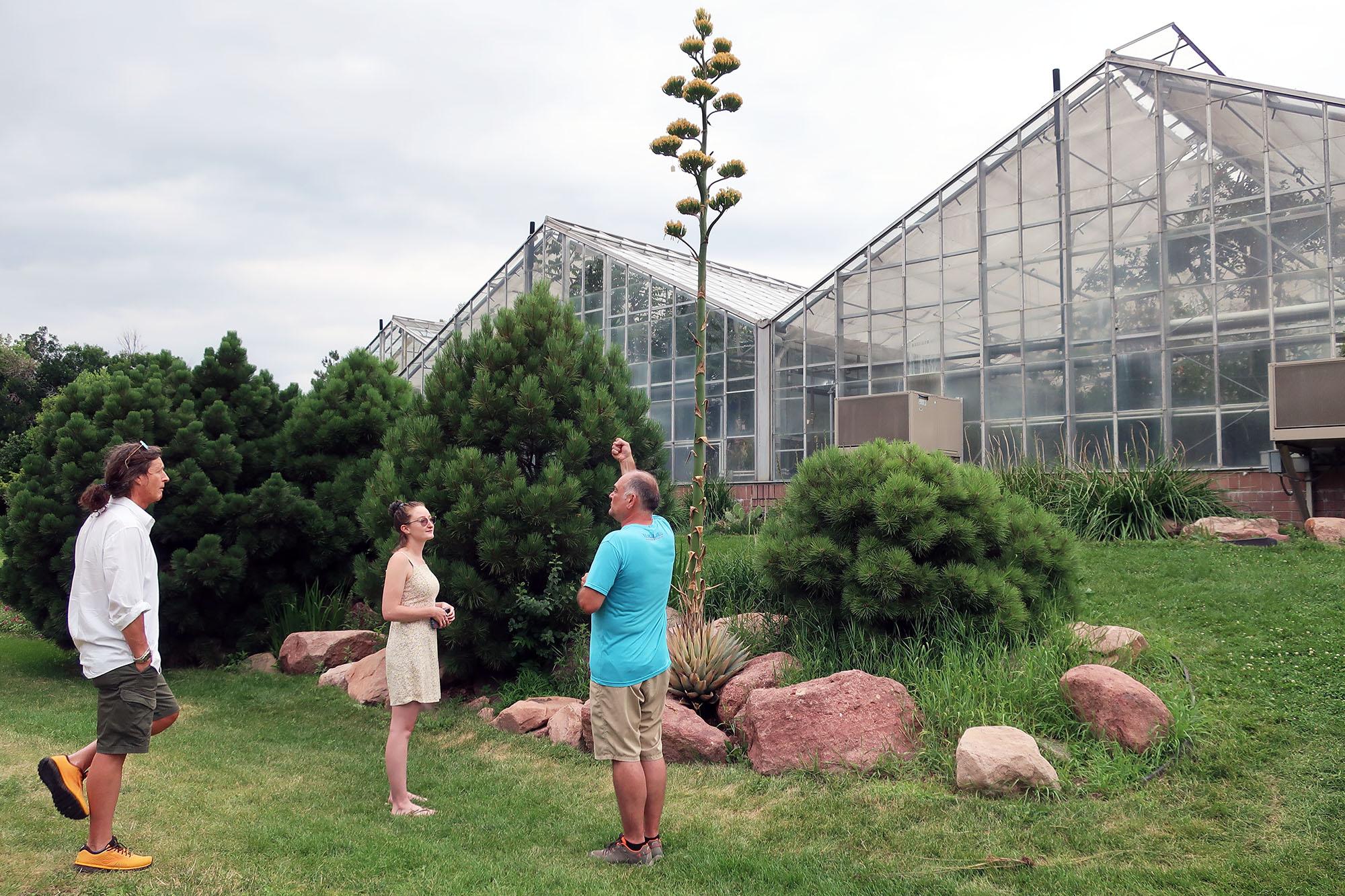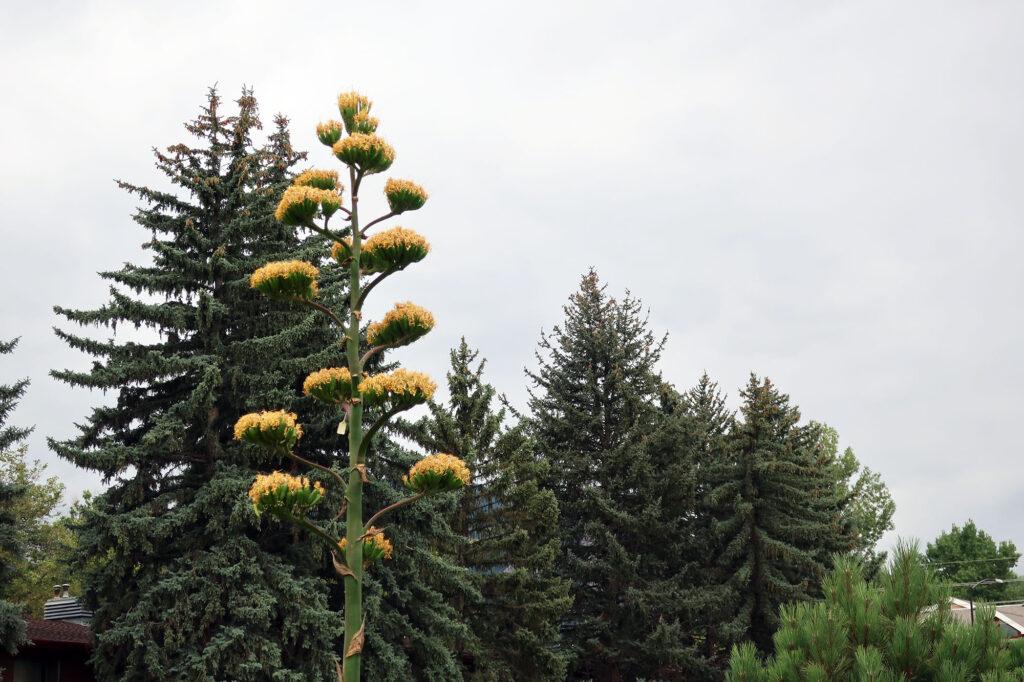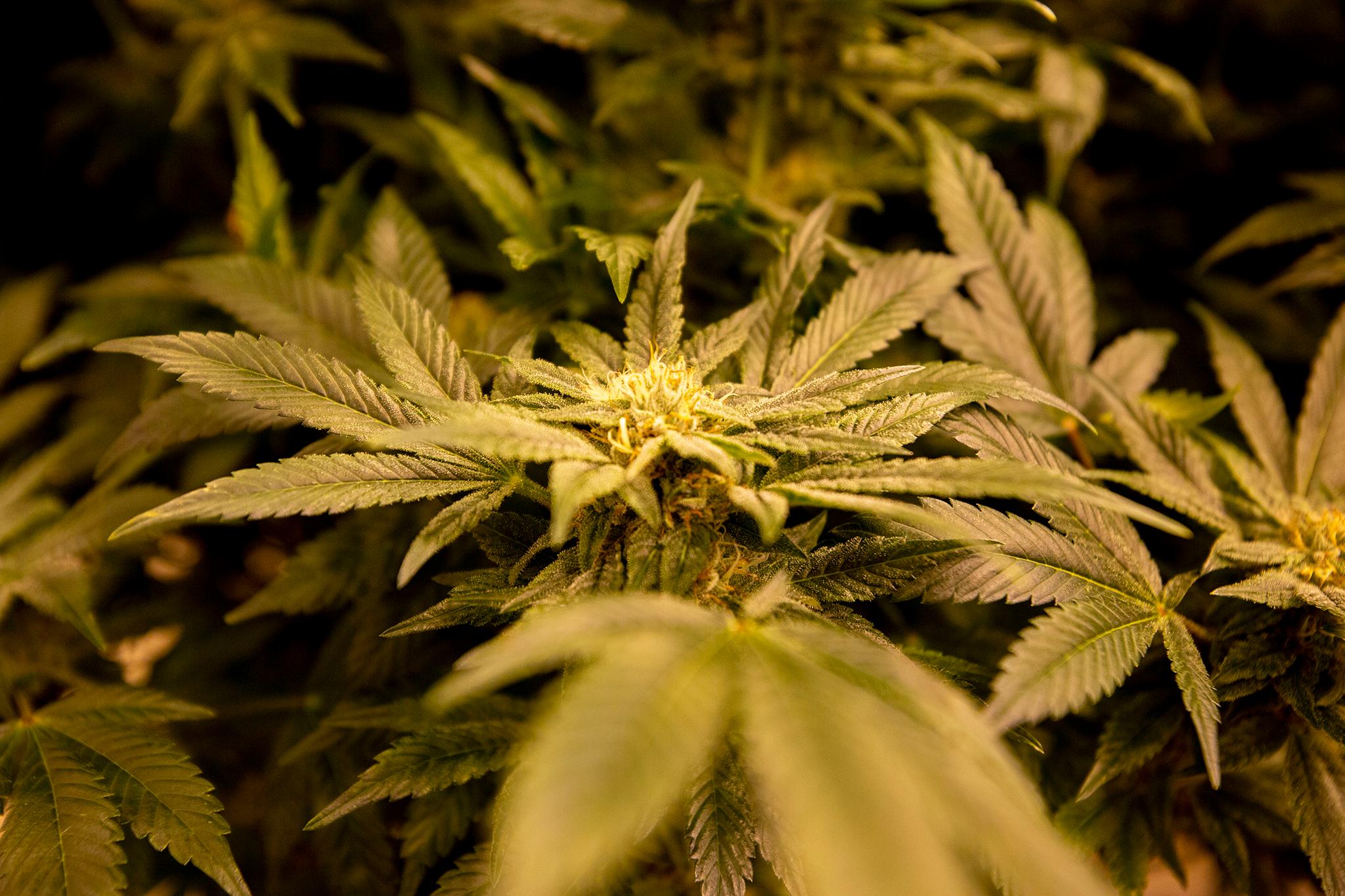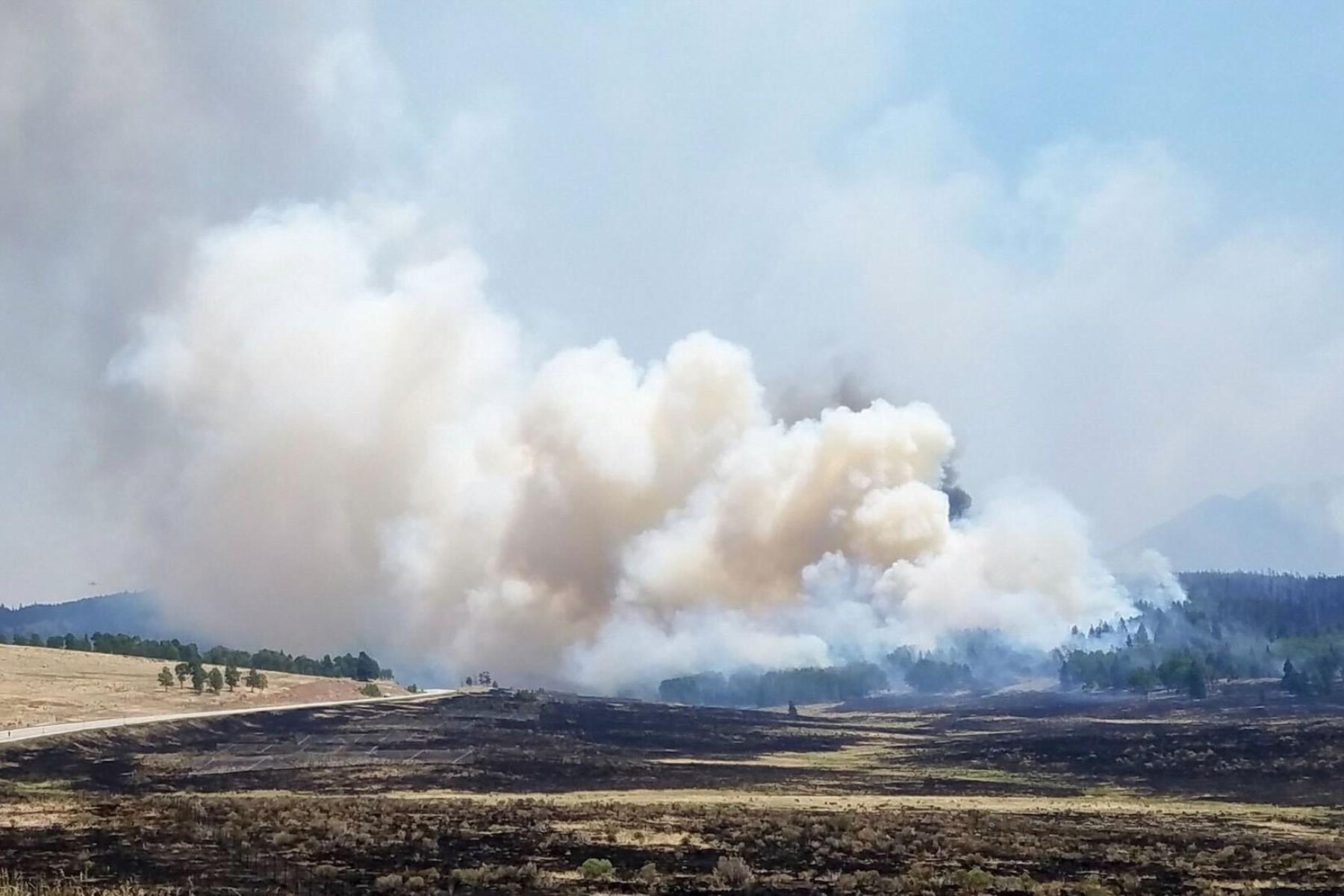
Colorado is experiencing an extraordinary bloom this season — and it’s not just wildflowers. Two agave plants are fully flowering at the University of Colorado’s Boulder campus greenhouse, and the rare bloom won’t last for long.
The two spiky plants have become a main attraction, bringing in a steady flow of visitors.
A large stem extends upwards about twenty feet out of both succulents. But, the yellow flowers — with full of seed pods protruding from the end of the stems — are the real stars of the show.
“To see them bloom is something that only happens once for that plant in its lifetime. In Colorado, it's not that frequent. You would have to go to the southwest to see these bloom on a regular basis,” John Clark, who runs the campus greenhouse, said.
That’s because Boulder isn’t agave’s natural habitat, which stretches from the Southwestern United States to the northern reaches of South America. There are only a few places in Colorado where you could catch a glimpse of the flowering plant, but it may happen once every three or four decades, earning the plant the nickname “century plant” for its “once in a lifetime” bloom.
The Denver Botanic Gardens also has agave plants. One of the last to bloom at the Gardens was in 2011, and none are in bloom right now nor are any are expected to bloom anytime soon.
Agave plants flower after they reach full maturation, a process that can take 30 to 50 years depending on the species. Clark said the two blooming in Boulder were replanted there in 1996 by Allan Taylor, a linguistic professor whose interests extended well beyond his corner of academia.

While there’s no way of knowing when any given plant will bloom, Clark said first saw signs of a potential bloom in early May.
“We noticed that the one on the south side of our building had what I call a thumb. It had inflorescence sticking up about a foot and a half into the air above the plant,” Clark said.
For a plant, being out of its natural element often means it can’t re-pollinate on its own. That effectively makes Clark and the greenhouse staff stand-in plant pollinators. Doing so entails a few trips up a ladder, sometimes as high up as 30 feet, to seed a new offshoot, known as agave pups, and usher in the dying plant’s offspring.
For visitor Olivia Murphy-Welconish, seeing the rare bloom was the perfect way to cap off her birthday celebration. She said she wouldn’t miss it for anything.
“It's incredible. And to see it in person, the pictures simply don't do it justice. It's amazing,” Murphy-Welconish said.
She first heard about the bloom from her dad. The two then decided to take a trip to the greenhouse together to see it for themselves.
Originally from Boulder, Murphy-Welconish now calls the Gunnison Valley home where she works for the annual Crested Butte Wildflower Festival that wrapped up last weekend. Having seen a monument flower bloom, a plant native to Gunnison that only flowers every fifty years, she said she felt inspired to see this bloom in person.
“I've always loved nature and been amazed by it and its wisdom. I think it's extra incredible when something takes as long to bloom as it does,” Murphy-Welconish said. “So to see something of a similar genre is pretty cool.”
The plants won't wait for you, but work can,” she said.
Boulder local Josh Yablon was bummed to miss last year’s campus agave bloom. He said he’s glad he caught it this time around and got to share the experience with his son.
“I don't always go searching for stuff, but I think having a 4-year-old probably encourages me to do that a lot more,” he said. “And in 30 years, I may not be here the next time, and he may not live here anymore. So, who knows? You've got to see it while you can.”









